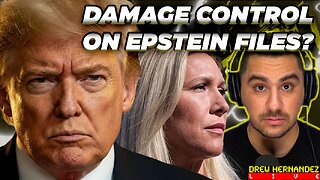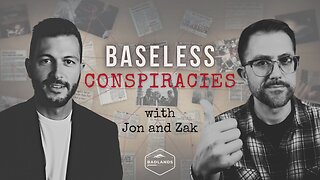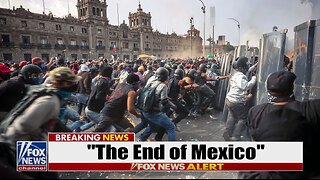Premium Only Content

Beneath the Surface: The Intricate Science of Project GNOME's Seismic Experiments | Nuclear Testing
►Twitter /X : https://twitter.com/history_tnt
Project GNOME, a pivotal component of Operation Nougat, was part of a comprehensive 45-test series conducted at the Nevada Test Site from September 15, 1961, through June 30, 1962—excluding the GNOME test itself. On December 10, 1961, the 3-kiloton GNOME test took place 1200 feet below the surface in a salt bed formation near Carlsbad, New Mexico.
This test marked a significant milestone as it comprised 48 subsurface experiments, rendering GNOME the most extensively instrumented seismic nuclear test in history. The wealth of data gathered during these experiments proved invaluable for both the Plowshare and Vela Uniform Programs.
GNOME played a pioneering role as the inaugural nuclear test within the Plowshare Program. The primary objective of the Plowshare Program was to explore the potential applications of energy generated by nuclear explosions for peaceful or civilian purposes. Concurrently, the Vela Uniform Program focused on the seismic detection, identification, and location of nuclear explosions. Ground-based instruments were utilized for detecting explosions in outer space, complemented by established satellite-based instruments.
Despite GNOME being conducted under the Plowshare umbrella, the Vela Uniform aspect aimed to discern the distinctive signals and effects generated by a 3-kiloton device detonated underground in salt beds compared to detonations of varying yields in alternative geologic formations like tuff and granite. Scientists also sought to draw comparisons between seismic signals from underground tests and those originating from natural earthquakes.
#ProjectGNOME #SeismicExperiments #NuclearTesting
-
 2:08:23
2:08:23
FreshandFit
11 hours agoDeVory Darkins Realizes Women Aren't Even TRYING To Get Married
128K50 -
 LIVE
LIVE
Drew Hernandez
1 day agoTRUMP DOES DAMAGE CONTROL AFTER MTG FALLOUT & DEFENDS TUCKER CARLSON!
864 watching -
 27:05
27:05
Robbi On The Record
8 days ago $16.34 earnedThe Secret to Aging Strong: What Your Body’s Been Trying to Tell You
55.5K5 -
 1:53:43
1:53:43
Badlands Media
12 hours agoBaseless Conspiracies Ep. 159: Hunting Season for the Elite
80.4K21 -
 2:05:40
2:05:40
Inverted World Live
7 hours agoThe Technocratic Web of Control w/ 7SEES | Ep. 142
61.4K13 -
 2:43:56
2:43:56
TimcastIRL
6 hours agoDemocrats COLLUDED With Epstein To HURT Trump, Emails BACKFIRE
235K77 -
 11:32:19
11:32:19
Dr Disrespect
15 hours ago🔴LIVE - DR DISRESPECT - ARC RAIDERS - STELLA MONTIS QUESTS
248K18 -
 5:20:41
5:20:41
SpartakusLIVE
9 hours agoSolos on WZ to Start then ARC?! || Friends: UNBANNED
49.1K1 -
 12:58
12:58
Cash Jordan
9 hours agoMexican MOB OVERTHROWS Capital... as "Socialist President" FLOODS AMERICA with CARTELS
40.8K14 -
 23:13
23:13
Jasmin Laine
11 hours agoPBO Breaks His Silence—“This Is Soviet Stuff”… and the Panel EXPLODES
31K21